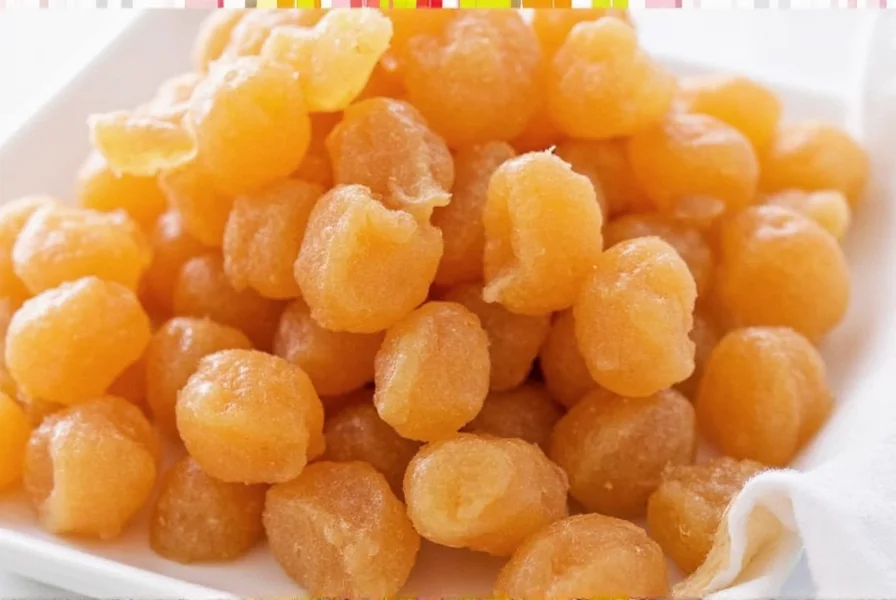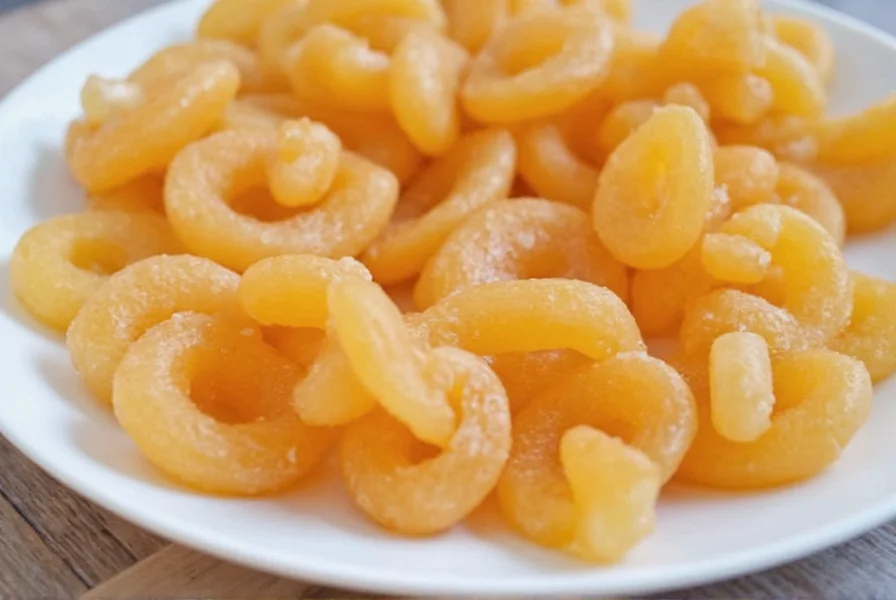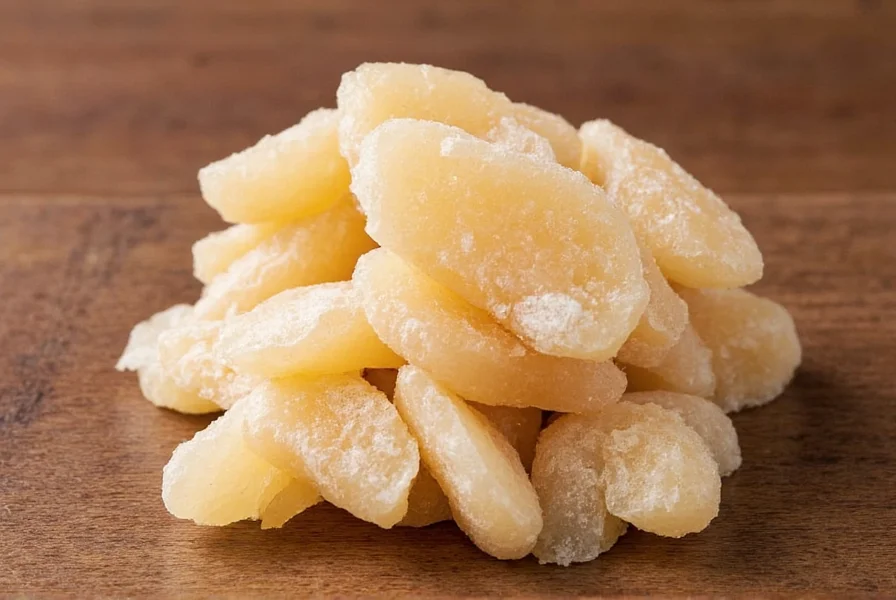The best homemade ginger candy recipe requires just 4 ingredients: 1 lb fresh ginger, 2 cups sugar, 1 cup water, and optional lemon juice. Peel and slice ginger into thin coins, simmer in sugar syrup for 45-60 minutes until translucent, then dry for 2-3 hours. This simple method yields chewy, spicy-sweet candied ginger with natural digestive benefits. Total time: 2 hours (plus drying). Makes approximately 12 oz of candy.
Creating perfect ginger candy at home is simpler than most people realize. This traditional preparation method transforms sharp, pungent ginger root into a delightful treat that balances spicy heat with sweet comfort. Unlike store-bought versions loaded with preservatives and artificial flavors, homemade ginger candy lets you control the spice level and sweetness to match your personal preference.
Why This Ginger Candy Recipe Works
The magic of successful ginger candy lies in the careful balance of sugar concentration and cooking time. When ginger slices simmer in a sugar-water solution, osmosis occurs—the sugar syrup gradually replaces the ginger's natural moisture. This process preserves the ginger while creating that distinctive chewy texture. The key is maintaining a gentle simmer rather than a rolling boil, which prevents crystallization and ensures even candying.

Ingredient Science: More Than Just Sugar and Ginger
Understanding each component's role helps you master this easy ginger candy from scratch technique:
| Ingredient | Function | Substitution Options |
|---|---|---|
| Fresh ginger root | Provides spicy flavor compounds (gingerols) | Young ginger for milder flavor |
| Granulated sugar | Preserves texture and draws out moisture | Raw sugar (darker color, caramel notes) |
| Water | Dissolves sugar for proper syrup consistency | None (critical for syrup formation) |
| Lemon juice (optional) | Prevents crystallization, adds brightness | Vinegar (1:1 ratio) |
Equipment Checklist
You don't need specialized tools for this simple ginger candy recipe:
- Sharp vegetable peeler (y-shaped works best for ginger's knobby shape)
- Mandoline slicer or sharp knife (for uniform 1/8-inch slices)
- Medium heavy-bottomed saucepan (prevents scorching)
- Candy thermometer (optional but helpful for precision)
- Parchment-lined baking sheet (for drying stage)
Step-by-Step Ginger Candy Instructions
Follow these detailed steps for foolproof crystallized ginger candy every time:
- Prepare the ginger: Wash thoroughly, peel using a spoon's edge (removes less flesh), then slice into uniform 1/8-inch coins. Soak slices in cold water for 30 minutes to reduce initial heat.
- Create the syrup: Combine 2 cups sugar and 1 cup water in saucepan. Bring to gentle simmer over medium heat, stirring until sugar dissolves completely. Add optional 1 tbsp lemon juice.
- Candy the ginger: Drain ginger slices and add to syrup. Reduce heat to low, maintaining bare simmer (180-200°F). Simmer uncovered for 45-60 minutes, stirring occasionally, until ginger becomes translucent and syrup thickens significantly.
- Dry the candy: Remove ginger slices with slotted spoon, reserving syrup. Arrange slices in single layer on parchment-lined baking sheet. Air-dry at room temperature for 2-3 hours, or until no longer sticky to touch.
- Optional coating: Toss dried slices in additional sugar for traditional crystallized finish, or roll in crushed nuts for variation.
Troubleshooting Common Ginger Candy Problems
Even experienced cooks encounter issues with ginger candy cooking temperature. Here's how to fix them:
- Too hard/brittle: Overcooked or cooled too quickly. Solution: Reduce cooking time by 5-10 minutes next batch.
- Too soft/sticky: Insufficient drying time or high humidity. Solution: Extend drying time or use dehydrator at 140°F for 1 hour.
- Crystallized syrup: Sugar recrystallized during cooling. Solution: Add 1 tsp corn syrup to next batch or ensure gentle simmer (not boiling).
- Bitter taste: Ginger cooked too long or used old root. Solution: Use fresher ginger and reduce cooking time.
Storage and Creative Serving Ideas
Properly stored, your homemade ginger candy will stay fresh for 2-3 weeks:
- Store in airtight container with parchment between layers
- Include silica gel packet to absorb excess moisture
- Re-crisp stale candy by baking at 200°F for 10 minutes
Try these serving suggestions beyond eating it plain:
- Chop finely and mix into cookie dough
- Steep in hot water for ginger tea with natural sweetness
- Pair with dark chocolate for gourmet dessert
- Add to stir-fries for sweet-spicy dimension

Health Benefits: What Science Says
While not a medical treatment, ginger contains compounds studied for digestive support. Research published in the Journal of Ethnopharmacology shows gingerols may help with occasional digestive discomfort. The American College of Gastroenterology notes ginger's potential benefits for temporary nausea relief. Your best ginger candy recipe for nausea should use fresh ginger rather than extracts for maximum natural compounds.
Recipe Variations to Try
Once you've mastered the traditional ginger candy preparation, experiment with these adaptations:
- Milder version: Blanch ginger slices in boiling water for 5 minutes before candying
- Extra spicy: Skip the initial soaking and use older, more fibrous ginger
- Citrus twist: Add orange or lime zest during final 10 minutes of cooking
- Chewy texture: Reduce cooking time to 35-40 minutes for softer candy
- Sugar-free option: Substitute erythritol for sugar (note: texture will differ)
Frequently Asked Questions
How do I prevent my ginger candy from becoming too hard?
To maintain chewy texture, monitor cooking time carefully—45 minutes typically yields chewy candy while 60+ minutes creates harder pieces. Remove ginger when it becomes translucent but still slightly pliable. The candy will firm up further during drying. For consistently chewy results, use a candy thermometer and remove at 220°F (soft-ball stage).
Can I make ginger candy without corn syrup?
Absolutely. This simple ginger candy recipe uses only sugar, water, and ginger—no corn syrup needed. The key is maintaining a gentle simmer rather than vigorous boil, which prevents crystallization naturally. Adding 1 tablespoon of lemon juice or vinegar to the syrup also helps inhibit sugar crystals from forming while enhancing flavor.
Why does my ginger candy taste bitter?
Bitterness usually comes from overcooking or using old ginger. Fresh ginger should have smooth, tight skin without wrinkles. Soaking slices in cold water for 30 minutes before cooking removes some initial heat compounds. If bitterness persists, try blanching ginger in boiling water for 5 minutes before making the syrup. Younger "spring ginger" has thinner skin and milder flavor.
How long does homemade ginger candy last?
Properly dried and stored in an airtight container with parchment between layers, homemade ginger candy lasts 2-3 weeks at room temperature. For extended shelf life, store in the refrigerator for up to 6 weeks or freeze for 6 months. Include a silica gel packet to absorb moisture. If candy becomes sticky, refresh it by baking at 200°F for 10 minutes.
Can I use this recipe for crystallized ginger in baking?
Yes! This crystallized ginger candy works perfectly in baking. Chop finely for even distribution in cookies, breads, or cakes. For best results, pat pieces dry with paper towel before chopping to prevent excess moisture in your batter. One study in the Journal of Food Science found homemade crystallized ginger retains more volatile compounds than commercial versions, enhancing flavor in baked goods.











 浙公网安备
33010002000092号
浙公网安备
33010002000092号 浙B2-20120091-4
浙B2-20120091-4